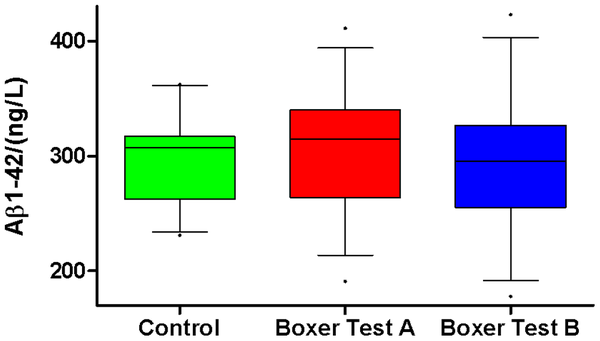It has been debated for quite some time whether Olympic (amateur) boxing is hazardous to the brain. Researchers at the Sahlgrenska Academy, Gothenburg University, joined with colleagues at the Faculty of Health Sciences at Linköping University and the Swedish Boxing Association in conducting a unique study of 30 top-level Swedish boxers and 25 reference persons. What they found was that boxers even in amateur bouts with headgear had brain injury similar to Alzheimers.
Their study shows that repeated blows to the head in the boxing ring can produce a release of brain injury markers to the brain fluid, similar to what is seen with after other types of head trauma, as well as in neurological illnesses such like Alzheimers.
"Our study shows that after bouts, some of the boxers had elevated concentrations of four different proteins in the brain fluid, which all signal damage to the brain's nerve cells. Moreover, two of the proteins were still elevated after a period of rest" says researcher Sanna Neselius, who led the study. Neselius was ranked as one of the best female boxers in the world, both as an Olympic and professional boxer.

Sanna Neselius. Boxer, now brain researcher. Credit: University of Gothenburg
As many of 80 percent of the boxers exhibited protein changes that indicate brain damage. The boxers who participated in the study competed on the top-level of Swedish boxing and all had fought at least 47 bouts. None of them had lost on a knock-out, and only one of the boxers mentioned symptoms after a bout (headache).
"The brain injury markers were elevated for 80 percent of the olympic boxers directly after a bout as a result of minor brain damage. That the brain fluid markers were elevated even after weeks of rest for some of the boxers can be interpreted as the damage had yet not healed or that some damage will remain, says Neselius, who has scheduled a meeting with the Swedish Boxing Federation's board of directors to discuss the results.

Cerebrospinal fluid (CSF) was collected from the controls once. The boxers were tested 1–6 days after a bout (A) and after a rest period without exposure to bouts or training with blows to head for at least 14 days (test B). doi:info:doi/10.1371/journal.pone.0033606.g004
"We need to discuss the results and how we can increase the medical safety for boxers, both during training and in competition," says Neselius. "I further hope that the results will be taken seriously by other martial arts federations, where the safety regulations are not as well defined as in boxing. The results may also be useful when discussing concussion guidelines."
Blood test a future option
"Preferably, we would like to find a simple blood test that provides the same information as our more advanced brain fluid examinations. The capability does not presently exist, but can perhaps become an option in the future with further and more extensive studies."
Citation: Neselius S, Brisby H, Theodorsson A, Blennow K, Zetterberg H, et al. (2012) CSF-Biomarkers in Olympic Boxing: Diagnosis and Effects of Repetitive Head Trauma. PLoS ONE 7(4): e33606. doi:10.1371/journal.pone.0033606





Comments